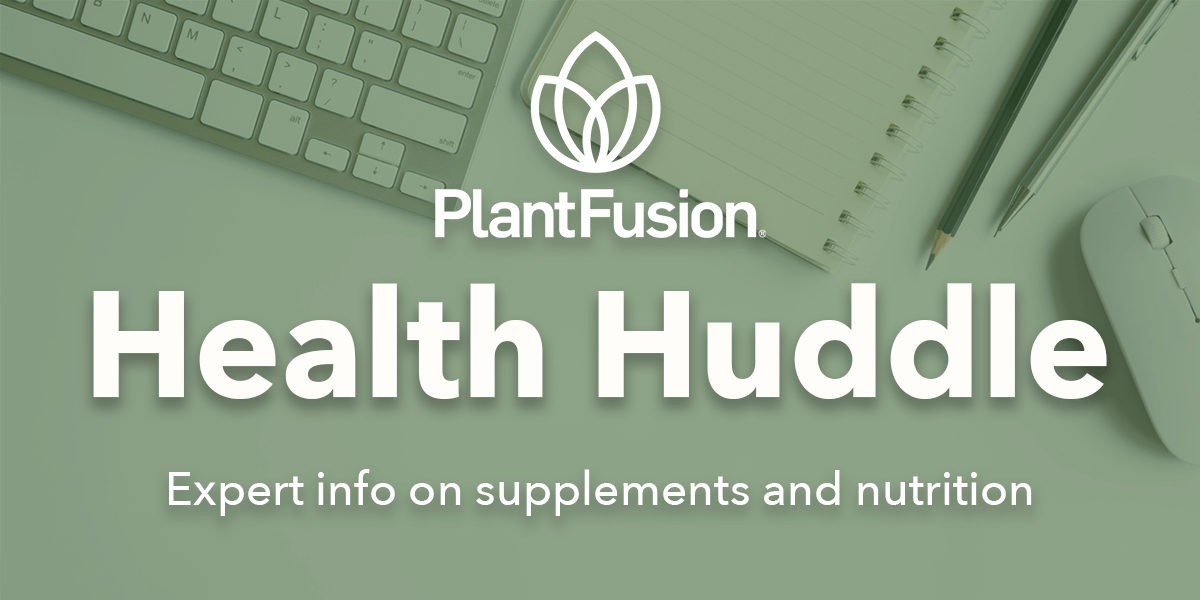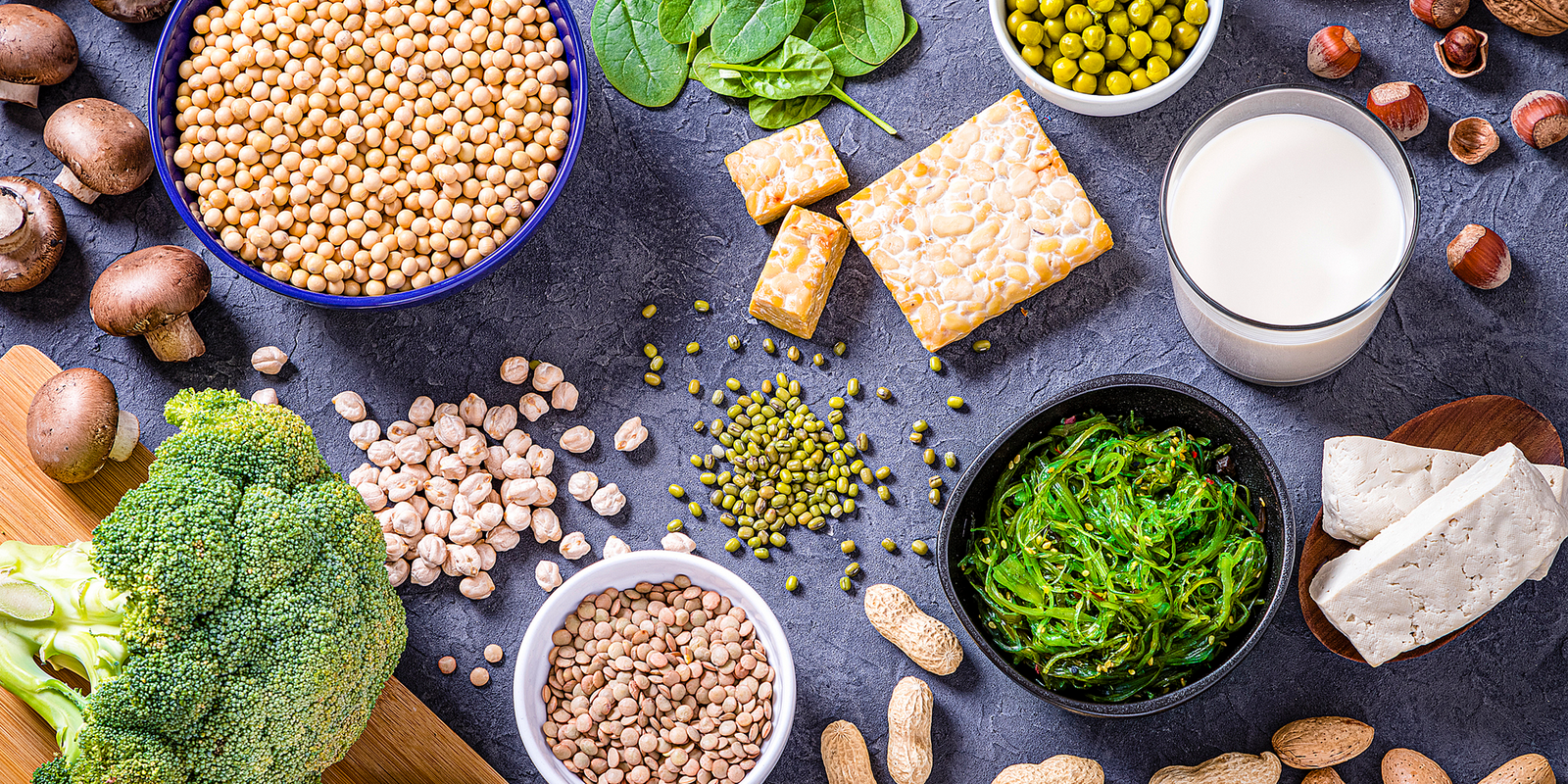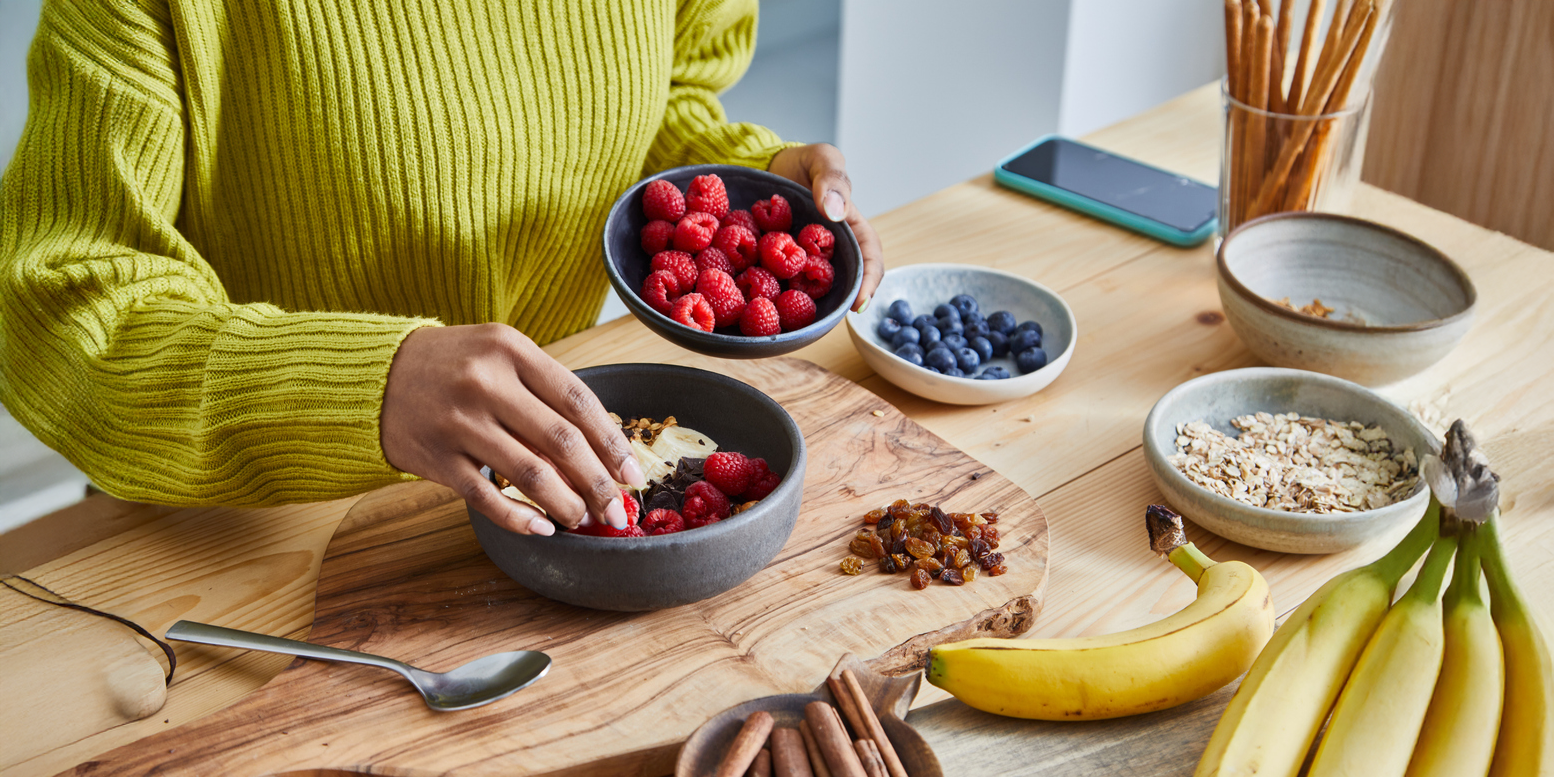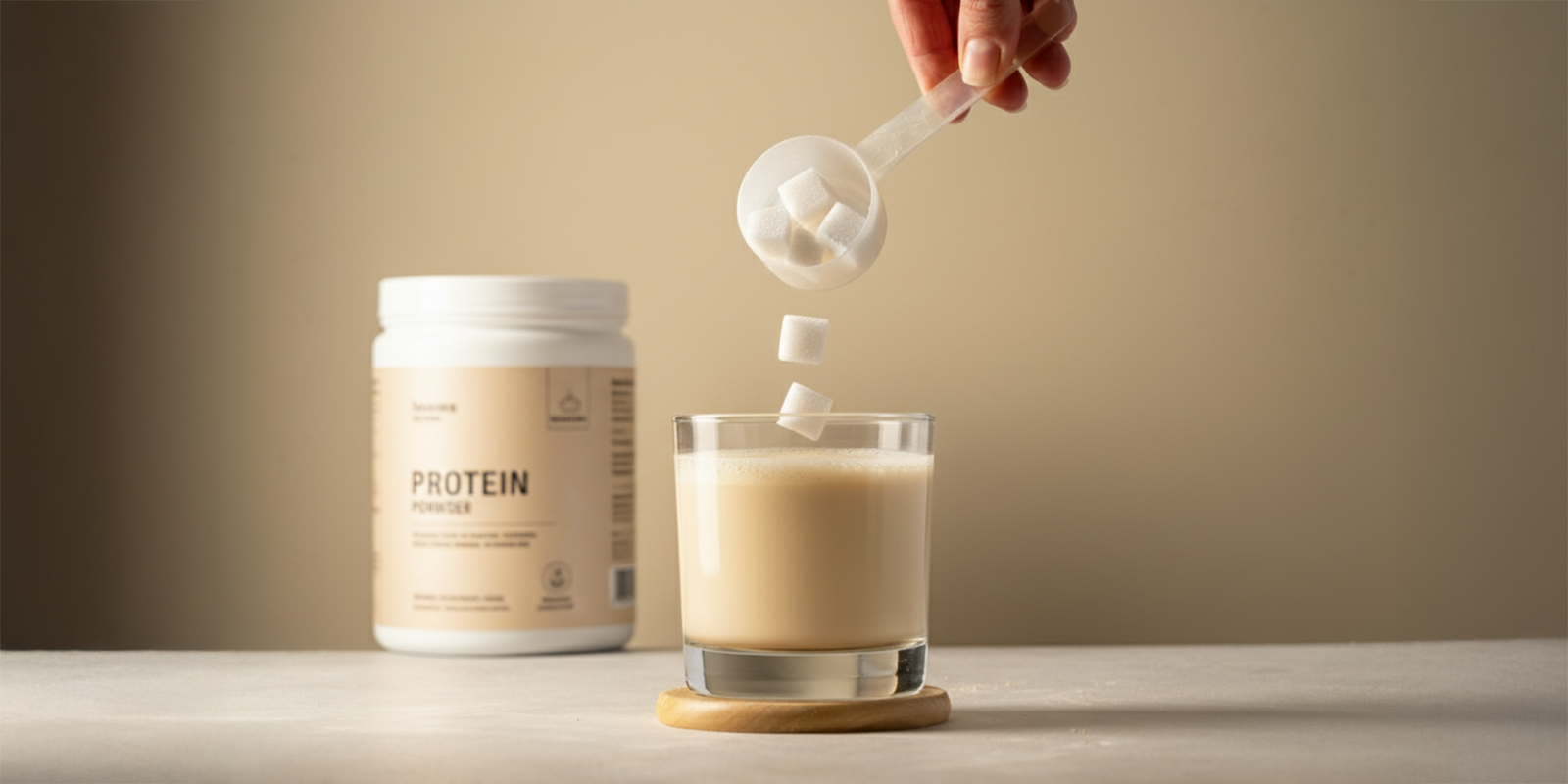The word "protein" is derived from the Greek word "Proteios," meaning "primary," "of prime importance," or "holding the first place." Although our bodies do need protein, that does not mean that we need to eat meat in order to get it. We need key nutrients – including protein – which we can easily get from plant-based foods.
What Plants Have Protein?
(Drumroll, please….) ALL plants contain protein! The amount of protein per serving will vary depending on the source, of course, but the plant kingdom gives us plenty of options for protein. Here are some of the most basic categories of plant proteins:
-
Legumes
As we mentioned, this group provides some great sources of protein. Legumes are also sometimes called "pulses," but they are not exactly one and the same. Some plants produce a pod that contains seeds inside. Legumes are the plants whosefruit is enclosed in a pod, and pulses refer to the dried seed itself (see graphic below). Common legumes include lentils, peas (snow, snap, green, split), beans (black, red, fava, garbanzo, etc.), soybeans (edamame and products made from soy such as tofu and tempeh), and peanuts.
-
Nuts and Seeds
Excluding peanuts, which are actually legumes, other nuts and seeds that provide protein are almonds, cashews, walnuts, hazelnuts, pistachios, pecans, hemp seeds, flax seeds, chia seeds, squash (including pumpkin) seeds, sunflower seeds, and sesame seeds.
-
Whole Grains
Whole grains are unrefined, so haven't been processed to have their bran and germ removed, leaving all of the nutrients intact. As in our bread example, whole grains can also be found in cereals, rice blends, and even certain pasta varieties! Some examples of whole grains are barley (hulled, but not pearled), wheat (often called "wheatberries"), quinoa, rice (brown, but not white), kamut, teff, wild rice (which is technically a grass!), millet, oats, and buckwheat.
-
Other Vegetables and Fruits
There are many vegetables and fruits that contain protein, as well. This protein content is usually in smaller amounts than the other sources, but some examples of vegetables and fruits with higher protein quantities include brussels sprouts, broccoli, cauliflower, asparagus, artichokes, watercress, collard greens, watercress, mustard greens, bok choy, and alfalfa sprouts. Also, Popeye was onto something – spinach is one of the most nutrient-dense leafy green vegetables a person can eat.
What Are the Best Sources of Plant-Based Proteins?
Some plant proteins are complete proteins, which means that they contain all nine essential amino acids. Others are missing some of these amino acids, so it is important to vary the sources of plant foods consumed in a plant-based diet. The following are your Top 10 Plant-Based Foods and Meals that will provide a good source of protein, are easy to find, and generally easy to prepare:
-
Lentils
Lentils are a great source of protein to add to a lunch or dinner routine. They can be purchased dried very inexpensively, which you would then rinse and cook as needed, or canned/prepackaged (and pre-cooked!), making them super easy to quickly add to stews, salads, or other dishes.
-
Chickpeas
Cooked chickpeas are high in protein, and can be eaten hot or cold in soups (hot) and salads (cold). You can even smash them up to make hummus, which you can then eat with vegetables, pita chips, or spread onto a sandwich.
-
Beans (especially with rice!)
Beans (and rice, alone) are an incomplete protein source, but form a complete protein when eaten together. Beans are inexpensive, filling, and extremely versatile; there are so many types of beans available (precooked and dried), and so many ways to eat them. Throw some black beans on a tortilla with cheese (vegan or no – your call) for a quick, easy quesadilla. Add some red kidney beans to your next bowl of pasta – the added protein and fibermake it so much more satisfying! And of course, adding a little Cajun spice to a bowl of rice and beans is a quick, flavorful meal.
-
Nuts
Peanuts, for example, are full of protein and healthy fats. Peanut butter is also rich in protein, and easy to eat in a sandwich or on crackers (Opt for a lower-in-sugar version to optimize the healthy choice!). Almonds are also a good source of protein, and also provide a good amount of vitamin E, which is great for the skin and eyes.
-
Quinoa
Quinoa is a grain with such a high-protein content it is often one of the few allowed grains on the low-carb diet plans. It is a complete protein, is rich in fiber and nutrients such as magnesium and iron, and is easy to include in salads, soups, or as a tasty side dish. Many newer pasta options also include this grain in their mix to provide additional health benefits.
-
Soy
Tofu, tempeh, and edamame – oh my! Soy products are among the richest sources of protein in a plant-based diet. The protein content varies based on the type – in a half-cup serving, tempeh has about 15g of protein, firm tofu about 10g, and edamame about 8 or 9 g per serving. Soy products contain good amounts of calcium and iron, which make them healthy substitutes for dairy products. Tofu doesn't have much of a flavor, making it easy to use in smoothies, stir-frys, or even desserts!
-
Seeds
Chia seedsand hemp seeds are both complete sources of protein, and are also rich in fiber and Omega-3fatty acids. Chia seeds will absorb any liquid they are put in, turning them into tiny, soft spheres (kind of like those in Boba/bubble tea). You can add them to a smoothie, soak them in water or almond milk to make a pudding, or toss a handful into your favorite drink. Hemp seeds are also small, brown seeds, but you can often find them as "raw, shelled hemp hearts." They are nutty and crunchy, and very easy to toss into a salad or sprinkle onto a casserole or vegetable side dish for an added dose of protein and antioxidants.
-
Vegetables
Nearing the end of our list (and we're saving the best for last, we promise!), we need to give a shout-out to so many dark, leafy greens or cruciferous vegetables that contain protein. Kale, baby greens, and spinach are easy to make a salad or sauté with some garlic – yum! Did you know? Just one single stalk of broccoli contains about 4 g of protein!Combine some of these greens with quinoa or one of the other grains we've mentioned for a nutritious, satisfying dish.
-
Potatoes
Is there anything a potato can't do? It's the perfect accompaniment to a meal in a fancy restaurant, a backyard family barbeque, or comfort food when you're not feeling well (post-tonsillectomy, anyone?). A large baked potato typically contains about 8g of protein, along with other important nutrients such as potassium and vitamin C. Add some cheese (again, vegan or not – your call), some hummus, maybe even some hemp hearts for a little bit of crunch, and you've got yourself a very healthy and protein-filled meal.
-
Protein Powder Supplements
Last but not least, we want to mention Plant-Based Protein Powder as an easy, healthy, and convenient option to make sure your protein goals are being met. Take a look at the supplement facts panel to understand thecontent of protein, fats, fiber, and carbohydrates, as well as to check the types of protein being included and if there is a lot of sugar or other unwanted ingredients. This will help you ensure you’re buying a protein powder that aligns with all of your health goals, not just your required protein intake.
How to Get Enough Protein On a Plant-Based Diet
Let's start with the question of "How much protein do I need?" Currently, the US, Canada, and several other countries recommend 0.8 grams per kilogram of body weight. The World Health Organization, on the other hand, recommends 0.66 grams of protein per kilogram of body weight. For a 140-pound person, the US RDA translates to about 50 grams of protein a day. If that person consumes 2,000 calories in a day, 50 grams of protein is exactly 10 percent of total calories. The amount your own body needs will depend on several factors, of course, such as your age, activity level, body composition, and overall health condition, but this provides a general guideline as to what you need to stay alive and support necessary body functions.
Some people, especially in the years before "plant-based" was so popular, have been concerned that plant-based diets can't provide enough protein. As we have hopefully shown by now, this is not true. Eating a whole-food, plant-based diet will generally provide a protein content at or above 12 to 15 percent of your total calories, which is plenty. Most of these foods contain 600 or fewer calories per pound (except for nuts and some seeds, which can be much higher). This allows you to eat a lot of food, experience different flavors and textures, and probably feel satisfied with lower overall calories.
While it is true that you may need to combine food sources if eating exclusively plant-based in order to ensure you are getting a complete protein (all 9 essential amino acids), it is very easy to get enough protein overall. And if you're ever in doubt, it is super easy to supplement with a high-quality plant-based protein powder.
This is part of ourUltimate Guide to Plant-Based Protein, a complete overview that will provide helpful information about plant-based protein, the main differences between plant proteins and animal proteins, what complete proteins are and why they are important, and how to get enough protein from plant-based sources.















